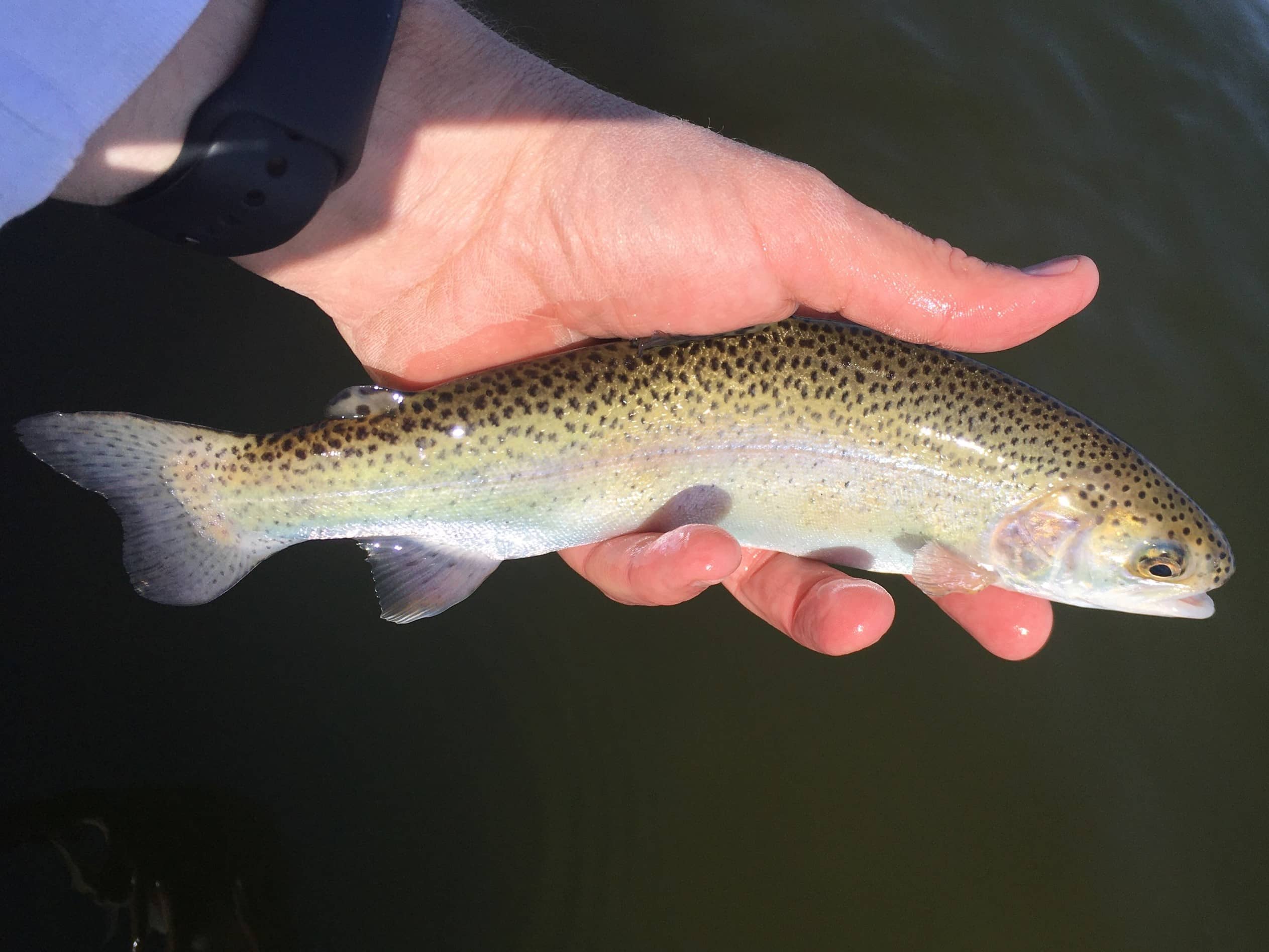
The author caught and released this well-colored rainbow trout earlier this week on a spring-fed North Dakota lake which sustains fish through the warm summer months and often into the next angling year. Simonson Photo.
By Nick Simonson
With the early spring and a fast ice out this season, fishing options are opening quickly, and trout angling provides a chance at bigger holdover fish from last year’s stockings.
Those trout that remain in lakes across the upper Midwest are active in cold water and they’re usually quite a bit bigger than they were when they were stocked last spring. What follows are some tips to locate these April opportunities before this season’s stockings start and get a chance at some big rainbows and browns lurking in prairie lakes.
1. Find the Fish
Typically, holdover trout require a special prairie lake that offers deep and cold waters, and not every flow in which they are placed each season will maintain them through the warmth of summer and a long winter under the ice. Utilizing online agency resources that detail stocking efforts, find those lakes that have been loaded with trout in the last year or two, and then check the depths utilizing a lake map if available. If they are over 35 feet at their deepest point, there’s a good chance that some of those stocked trout survived last year and are available for spring fishing. Once on the water, look for active trout in the shallows, or up near the surface as the water begins to warm under the spring sun.
2. Keep It Simple
While only the smallest morsels of typical trout food – midges and the like – are hatching this time of year, these fish will be feeding on whatever they can find. As a result, giving them anything that looks edible will help connect with faster action. A simple selection of small spoons, spinners and marabou jigs is all that’s really required to get their attention and trigger a bite. These offerings also help cover open water quickly, which in the case of holdover trout is a good thing, as their populations are much sparser than in the month after they were stocked and action was much faster. It’s that one big fish which can make the day, so don’t be discouraged if it only ends up being a bite or two on an outing.
3. Be A Jerk
It’s not uncommon to have short-striking trout chase a lure, bumping it, slashing at it, and ultimately missing the hook point on a first or multiple attacks. These near-misses are easily detected as slight jarring sensations or subtle fluctuations in the motion of a spoon or spinner. Immediately after these sensations, snap the rod tip, pause the retrieve and twitch the lure erratically to trigger a second strike. Oftentimes, a slight jerk will bring a fish in for a second strike and connect with the trout. It is not uncommon to see a trout following a lure to the boat or the shore, and have it take several swings at it before getting the hooks into it. So don’t give up! Keep the lure in motion and make it a bit more erratic in the retrieve.
4. Get Over It
Especially in spring, it’s important to get over the idea that trout are these fussy, dainty fish that can only be caught on the fly or with the most precise presentation. In the end, they’re still predators and sometimes offering up heavy metal in the form of spoons or spinners, or a gaudy, rapidly-retrieved jig, or some other less-than-subtle offering is what it takes to get the job done. Consider trolling crankbaits and spoons to cover water and connect. Trout are hungry in spring, so give them something bigger to eat and bend the rules that society seems to imply on their populations.
If all else fails (and the lake’s regulations allow for it) utilize a pinch of nightcrawler, sparkly trout dough or eggs-in-a-jar on a small hook and enjoy the sunshine of a warm spring afternoon watching a slip float bobbing in the dappled water.
Just remember to confirm these tactics fall within the regulations protecting certain trout waters including number of hooks, barbless offerings, bait types, seasonal dates and catch-and-release regulations.
